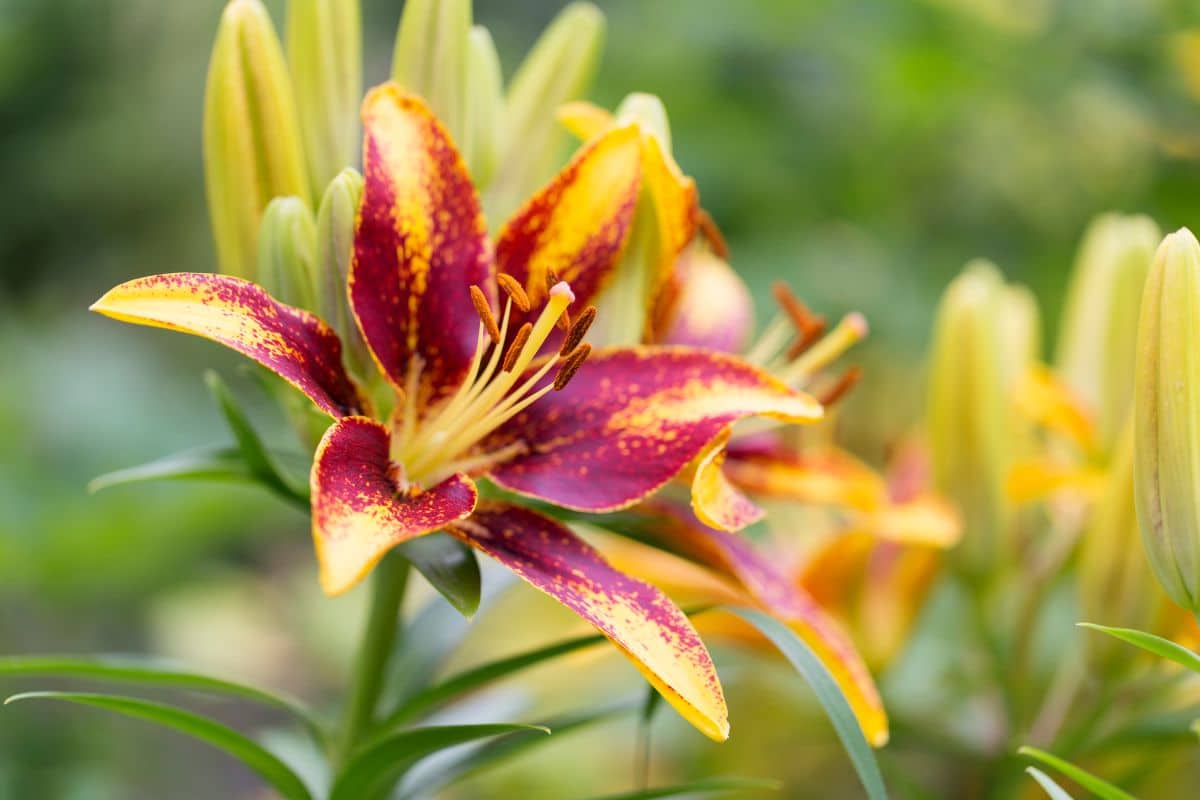Gardeners often face challenges when selecting plants for areas near black walnut trees. These majestic trees produce juglone compound, a natural allelopathic substance that can severely damage or kill sensitive plant species. Understanding which plants can tolerate this chemical becomes crucial for successful landscaping in affected areas.
Asiatic lilies represent one of the most popular flowering bulbs in home gardens. Their vibrant colors and relatively easy care requirements make them attractive choices for many gardeners. However, their compatibility with juglone-producing environments requires careful consideration before planting near walnut trees.
Understanding juglone toxicity in garden environments
Juglone toxicity affects numerous plant species differently. Black walnut trees, along with butternut and English walnut varieties, naturally produce this compound as a defense mechanism. The chemical concentrates primarily in roots, bark, and hulls, though leaves also contain measurable amounts.
The compound leaches into surrounding soil through root exudates and decomposing plant material. Rain can spread juglone from fallen leaves across wider areas, creating zones of varying toxicity levels. Most affected plants develop symptoms within 24 to 48 hours of exposure, showing wilting, yellowing, and eventual death.
Understanding soil chemistry helps gardeners make informed decisions. Juglone concentration varies significantly based on tree age, soil drainage, and proximity to the root zone. Well-draining soils typically show lower toxicity levels compared to clay-heavy environments where the compound persists longer.
Some gardeners attempt to mitigate juglone effects through soil amendments and drainage improvements. While these methods can reduce toxicity levels, they rarely eliminate the risk entirely. Selecting naturally tolerant plants remains the most reliable strategy for success near walnut trees.
Professional landscapers often recommend testing soil samples before establishing new gardens. Laboratory analysis can reveal juglone concentration levels, helping determine which plant species might survive in specific locations. This approach proves particularly valuable when planning flower selections that won’t harm your garden ecosystem.
Asiatic lily tolerance to allelopathic compounds
Asiatic lilies demonstrate moderate tolerance to juglone exposure compared to highly sensitive species like tomatoes and peppers. Research indicates these bulbous perennials can survive in areas with low to moderate juglone concentrations, though growth may be somewhat stunted.
Several factors influence their survival rates near walnut trees. Soil drainage plays a critical role, as waterlogged conditions increase juglone toxicity effects. Well-established lily bulbs show greater resistance than newly planted specimens, suggesting that root development affects tolerance levels.
Planting depth also impacts survival chances. Deeper planted bulbs often escape the highest juglone concentrations found in surface soil layers. Professional growers recommend planting Asiatic lily bulbs at depths of 6 to 8 inches when dealing with potential allelopathic stress.
Variety selection within the Asiatic lily group can influence success rates. Some cultivars demonstrate superior tolerance to environmental stress, including chemical exposure. ‘Enchantment’, ‘Connecticut King’, and ‘Red Velvet’ varieties have shown promising results in challenging growing conditions.
Timing of planting affects establishment success significantly. Fall planting allows bulbs to develop strong root systems before spring growth begins. This extended establishment period helps plants better withstand allelopathic stress during the following growing season. Just as proper timing matters for lilies, knowing how to maintain healthy garden plants requires understanding each species’ specific needs.
Optimal growing strategies for juglone-affected areas
Successful cultivation of Asiatic lilies near walnut trees requires specific management techniques. Distance from the tree trunk significantly affects survival rates. Planting beyond the canopy drip line reduces juglone exposure while still allowing for attractive landscape design.
Soil preparation becomes essential in these challenging environments. Adding organic matter like compost can help bind juglone molecules, reducing their bioavailability to plant roots. Raised bed construction offers another effective strategy, elevating plants above heavily contaminated soil layers.
Regular soil testing throughout the growing season helps monitor juglone levels. Professional soil laboratories can provide detailed analysis, allowing gardeners to adjust management practices accordingly. Some facilities offer specialized testing specifically for allelopathic compounds.
Companion planting with juglone-tolerant species creates supportive growing environments. Plants like cherry trees, mulberries, and persimmons can provide beneficial shade and wind protection. Grasses and sedges also demonstrate excellent tolerance while offering attractive ground cover options.
Water management requires careful attention in affected areas. Consistent moisture levels help plants cope with chemical stress, but avoiding waterlogged conditions prevents concentration buildup. Drip irrigation systems provide precise water delivery while minimizing soil disturbance.
The following juglone-tolerant plants make excellent companions for Asiatic lilies :
- Black raspberry bushes – provide natural windbreaks
- Wild ginger groundcover – offers attractive foliage contrast
- Rye grass varieties – create uniform lawn areas
- Cherry tree species – add vertical interest and spring blooms
- Plantain and dock – serve as natural soil indicators
Creating diverse plant communities helps establish resilient garden ecosystems. Understanding specialized plant care requirements becomes crucial when dealing with challenging growing conditions. Similarly, learning about indoor plant maintenance can inform outdoor gardening decisions.
Alternative approaches and long-term garden planning
Gardeners seeking reliable flowering options might consider naturally juglone-resistant alternatives to Asiatic lilies. Daylilies, irises, and peonies demonstrate superior tolerance while providing similar aesthetic appeal. These perennials establish more readily in affected soils without extensive soil modification.
Container gardening offers another practical solution for challenging locations. Large planters filled with quality potting soil eliminate juglone exposure entirely while maintaining design flexibility. This approach works particularly well for seasonal color displays and experimental plantings.
Long-term landscape planning should consider walnut tree removal in severe cases. While these trees provide valuable shade and wildlife habitat, extremely high juglone levels can make gardening nearly impossible. Professional arborists can assess tree health and removal feasibility.
Soil remediation techniques continue evolving as research progresses. Some gardeners report success using activated charcoal amendments, though scientific evidence remains limited. Natural ground cover solutions might prove more practical for large affected areas.
Creating productive garden spaces often requires creative problem-solving approaches. Indoor gardening techniques can supplement outdoor growing limitations while maintaining year-round plant cultivation opportunities. Professional consultation helps develop comprehensive strategies addressing specific site challenges and gardening goals.

